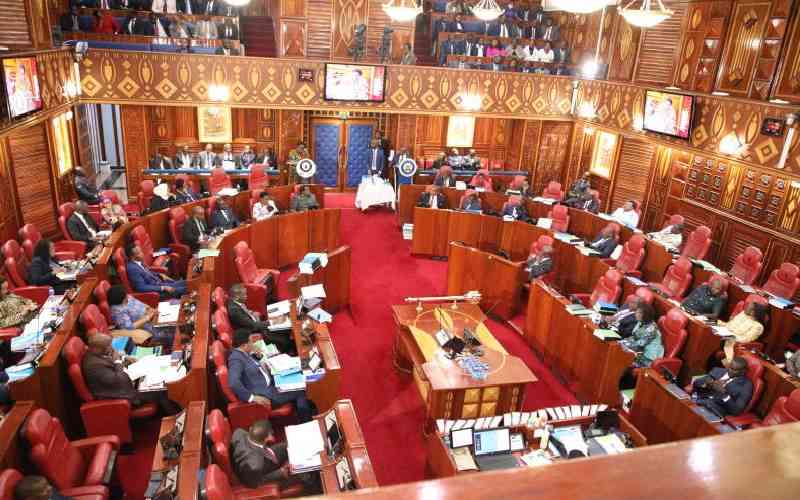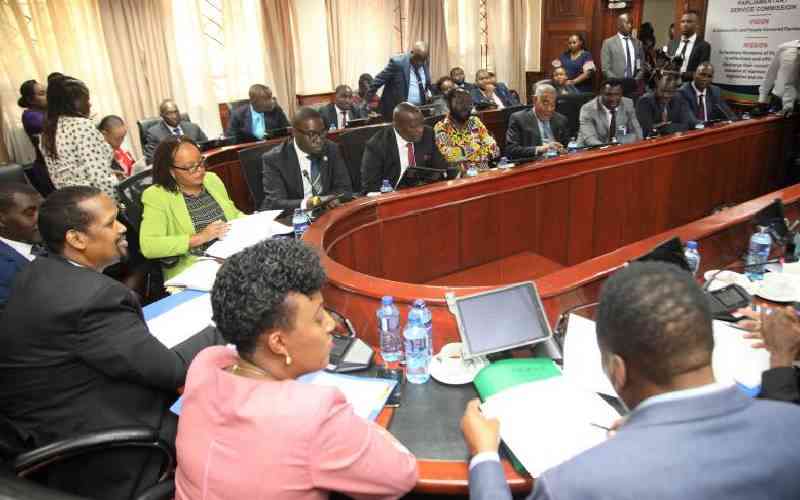
NAIROBI: Though limited in some ways, devolution represents a major transformation of society.
It reverses the system of control and authority established by the colonial powers and perpetuated by successive presidents.
Two major interrelated and defining features of that system were the centralisation of power in the president and the battery of state coercive power.
The struggle for the dispersal and sharing of state power on a regional basis started before independence.
What is devolution
It is a system under which certain governmental powers are exercised by counties, not by the national government, and through institutions elected by their people.
Counties can make law about and administer these matters. They have resources from the national government and those they raise.
The authority and institutions of the counties and their relationship with the national government are established in and protected by the Constitution. In this way, devolution is an integral part of Kenya’s constitutional system.
History
The movement for devolution was prompted in large part because of the centralisation of the state, particularly the system of provincial administration (PA).
PA was the bedrock of colonial administration: Directly under the governor’s control, PA dominated other governmental agencies in the field.
Just before independence there was a movement (majimbo) for the transfer of significant powers to regions, largely based on provinces. A primary reason was to eliminate the PA system.
However, Jomo Kenyatta and his close associates did not like this sharing of power and within a year repealed majimbo (after suitably bribing the members of the Senate).
In due course, the PA’s authority was fully restored and Kenyatta made as much use it as had Governor Evelyn Baring during the emergency.
Stay informed. Subscribe to our newsletter
A major demand during the multi-party struggle was the dispersal of power, both vertically and horizontally. Devolution was adopted as an objective in the famous Safari Park national conferences in the 1990s.
The Constitution of Kenya Review Act 2000 required the Constitution of Kenya Review Commission (CKRC) to consider people’s participation through the devolution of power; respect for ethnic and regional diversity and communal rights.
What the people told CKRC
Wherever the CKRC went, it noted widespread feelings of alienation from central government because of this concentration of power in the national government, and in the president. People felt marginalised and neglected, deprived of their resources; and victimised for their political or ethnic affiliations.
There was particular resentment of the PA which was seen as an extension of the president’s office, and of the arbitrariness and abuse of power by its officials.
Many had doubts about the legitimacy of the Administration Police, wanting forms of community policing at local levels.
Constitutional Proposals for devolution CKRC and Bomas
CKRC established detailed proposals for devolution, beginning with objectives, and covering powers and institutions of devolved units and their relationship with the national government.
The proposals were received favourably on the whole by Bomas delegates (even though some groups were opposed in principle to the idea of devolution, including Kibaki and his ministers). No disagreement was expressed with respect to the objectives of devolution.
The major disagreement was on what should be the principal unit of devolution. One group favoured the district, the other the region. CKRC had chosen the district but found some co-ordinating role for the province.
At Bomas, a compromise was struck by giving provinces somewhat enhanced powers. Bomas accepted CKRC proposal to abolish the PA (but not administration police).
However, Kibaki’s Government sabotaged the draft as is well known, producing what is known as the Wako Draft which was offered to, but rejected by the people, in a referendum in 2005.
Wako Draft
The Wako Draft omitted altogether the concept of “devolution”, reverting to “local government”.
It proposed only one sub-national unit—the district.
There was little detail about how district authorities would be constituted. The Wako Draft rejected a second chamber to safeguard the interests of districts.
The creation and dissolution of districts would depend ultimately on the president’s decisions.
Overall, districts would have been little more than glorified local authorities. It is widely believed the elimination of devolution was a primary cause of the rejection of the Wako Draft.
2010 Constitution
The 2010 Constitution largely followed the Bomas scheme.
The committee of experts was faced with the same dilemmas as had vexed CKRC and Bomas, namely the levels and numbers of devolved units.
At first it supported the idea of three levels (unlike the five of the CKRC and three of Bomas).
But later it opted for a single lower level to avoid a “complex system”.
The units at that level were labelled counties and their boundaries largely followed district boundaries drawn as part of independence arrangements.
Objectives of devolution
A special feature of devolution in Kenya is the close attention given to its objectives and principles (in line with the general approach of the Constitution to the exercise of state power).
The best way to understand the objectives of devolution is to examine Articles 174 and 175 (which have remained unchanged from the CKRC Draft).
In addition, county governments are bound by the constitutional principles in Article 10 and Chapter 6 on integrity. Article 174’s nine objectives can be consolidated into the following principal objectives (with some overlap between them).
Diversity
A major reason for devolution ever since before independence has been the recognition of Kenya’s diversity.
Article 174 places special emphasis on self government, particularly the rights of minorities and marginalised communities, and other groups, to manage their own affairs and development.
Article 175 requires the promotion of gender equity and equality in counties.
National unity
Throughout the Constitution, diversity and national unity are balanced, almost two sides of the same coin.
So it is with devolution. The former centralised system under a powerful presidency tended to ethnicise politics and politics of exclusion.
Now devolution provides many sites of power, reducing the danger of exclusion.
The rules about inter-dependence and co-operation between the national and county governments should strengthen national unity. The emphasis is on inclusion of all groups at both national and county level.
Democracy and accountability
A major deficit of democracy in Kenya has been the absence of people’s involvement in politics and policy discussions, or their ability to demand accountability of the government.
Even in the five-yearly elections, their horizon has been circumscribed by tribalism.
Devolution creates more opportunities for the people to choose their leaders, and great expansion in public participation. Democracy should also be strengthened by separation of powers and checks and balances through new centres of authority.
Promoting economic and social development
Devolution is expected to lead to more rapid and balanced economic and social development. The centralised system led to the concentration of economic activities in the capital city area, to uneven development and disparities of economic opportunities.
This resulted in the impoverishment of many regions and communities and the drift towards urban areas.
With new governments in counties, there will be greater incentives and opportunities for economic and social development throughout the country.
Promoting Equitable Distribution of Resources
There has been much debate as to whether devolution will lead to a more equitable distribution of resources;, some people think a centralised government is more likely to achieve this.
But in Kenya many counties outside three or so major urban areas have done poorly, and even in urban areas the main beneficiaries are often not the local people.
The Constitution now requires the equitable sharing of national and local resources throughout Kenya.
Achieving objectives
The global record shows some significant successes and some spectacular failures. Circumstances are more propitious than they were for majimbo. That was a defensive measure, born out of fear, to secure for smaller communities some powers of self-government.
This devolution has been negotiated among Kenyans over a long period and is the result of compromises—not an imposition by a departing colonial power. And unlike majimbo, people of all counties have welcomed devolution and are looking forward to participating in its affairs.
Courtesy: Katiba Institute
 The Standard Group Plc is a
multi-media organization with investments in media platforms spanning newspaper
print operations, television, radio broadcasting, digital and online services. The
Standard Group is recognized as a leading multi-media house in Kenya with a key
influence in matters of national and international interest.
The Standard Group Plc is a
multi-media organization with investments in media platforms spanning newspaper
print operations, television, radio broadcasting, digital and online services. The
Standard Group is recognized as a leading multi-media house in Kenya with a key
influence in matters of national and international interest.
 The Standard Group Plc is a
multi-media organization with investments in media platforms spanning newspaper
print operations, television, radio broadcasting, digital and online services. The
Standard Group is recognized as a leading multi-media house in Kenya with a key
influence in matters of national and international interest.
The Standard Group Plc is a
multi-media organization with investments in media platforms spanning newspaper
print operations, television, radio broadcasting, digital and online services. The
Standard Group is recognized as a leading multi-media house in Kenya with a key
influence in matters of national and international interest.










